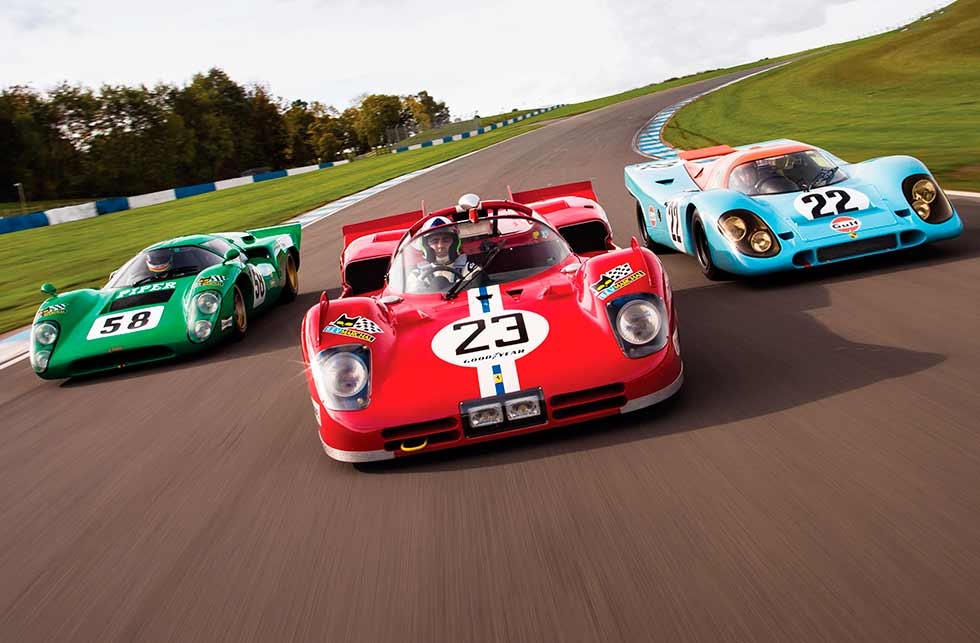
The Power and the glory – triple track test. Magic numbers Porsche 917, Ferrari 512, Lola T70 – perhaps as great a concentration of sports car heritage as you could find in a single pit garage. And Motor Sport was at Donington Park to drive them. Your chauffeur? Dario Franchitti. Writer Simon Arron. Photographer Drew Gibson.
Triple test Sports car icons Dario Franchitti takes on racing’s holy trinity.
SPORTS CAR TREASURES We spent a day with a Ferrari 512S, a Porsche 917K and a Lola T70… and invited Dario Franchitti to Donington.
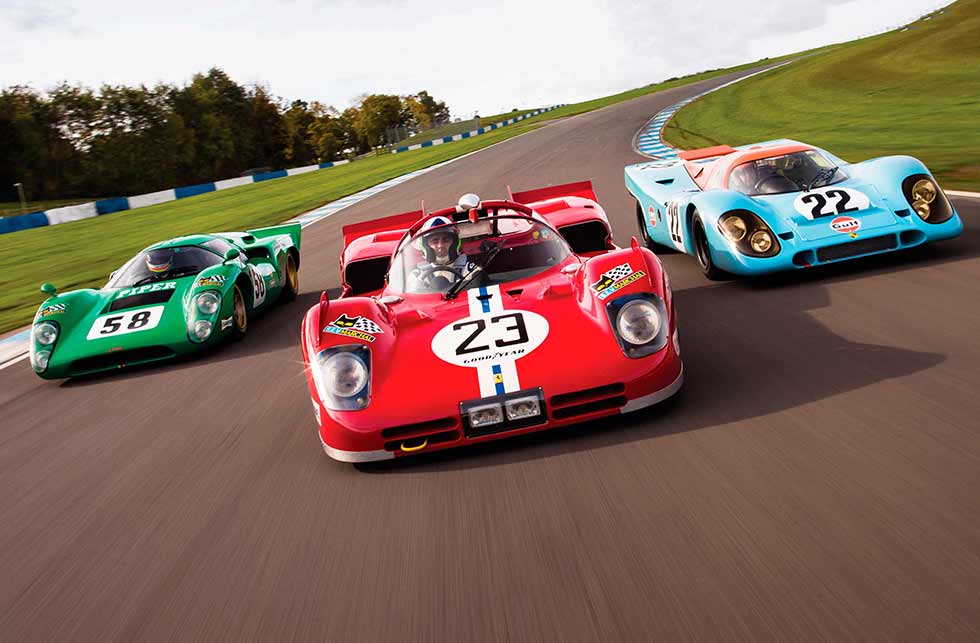
Time’s passage has a habit of altering perceptions. In the warm light of 21st century Leicestershire, the collage of Porsche 917, Ferrari 512S and Lola T70 is arguably the apotheosis of mechanical charisma. In the cold light of July 1971’s Motor Sport, however, Andrew Marriott’s Le Mans report suggested otherwise. “Undoubtedly the race has lost much of its old magic,” he wrote. “In this, the last year of the present five-litre cars, there were few high spots. The casualty rate among the fancied runners was high, and of the nine Ferrari 512Ms and seven Porsche 917s only two of each marque remained 24 hours later.”
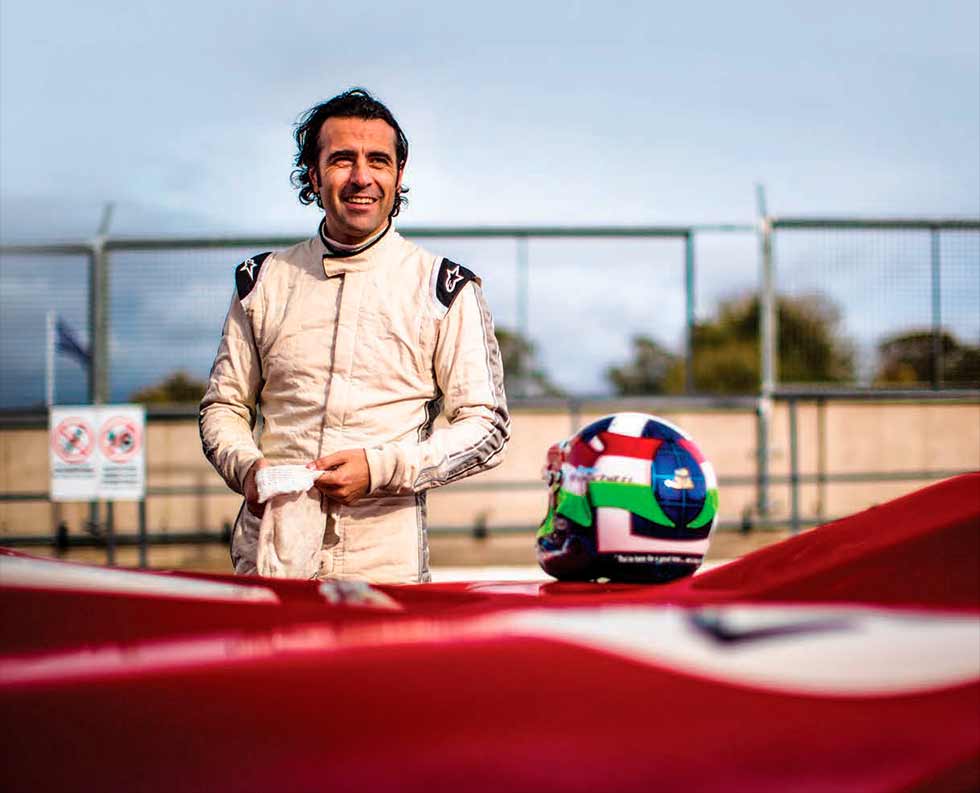
Nine 512s and seven 917s? Time travel can’t come soon enough.
Today that era is infused with a sense of romance that wasn’t necessarily apparent at the time – Motor Sport’s continental correspondent Denis Jenkinson skipped Le Mans in 1971, for the first time in almost 20 years, due to the ‘poor’ quality of the entry – but in the slipstream of the 1960s, and the intense Ford vs. Ferrari warfare, perhaps things did seem a little tamer.
Marriott again: “The field was made up with a very large number of Porsche 911s, which proved thoroughly boring to watch and were probably rather boring to drive, except when you had a 512 lapping you on one side and a 917 on the other…” Whatever the period reality, the 917 and 512 are blessed with timeless grace – as is the car alongside them today, the distinguished Lola T70 Mk3B. The three belong to the same stable and are gathered at Donington Park as part of a test organised by historic racing regular Joe Twyman.
“The owner [who wishes to remain anonymous] wanted to see all three running, because he’d always had in mind a photograph of them grouped together,” Twyman says.
“That was the seed, so I made arrangements at Donington Park – one of the attractions being that it runs unsilenced test days [a benefit of being at the end of an airport runway]. You wouldn’t really want anything else for a 512, a 917 and a T70. It was a day for special cars, some of which aren’t normally seen racing.”
Also present were another 917 and a 956 – Le Mans winners, both – a Cologne Capri, a Targa Florio 911 RSR and a Jaguar XJR-9 – but Motor Sport was invited to focus on the three at the top of the list… and not just to photograph them but to take stints at their helms. For that part of the job we recruited triple Indy 500 winner and four-time IndyCar champion Dario Franchitti, a dedicated student of our sport’s history. While the Scotsman requires little introduction, the cars might – in detail, at least.
The 917 is chassis 026/31, originally a JW Automotive car that David Hobbs and Mike Hailwood raced in Gulf colours at Le Mans in 1970 (where it failed to fiinish, following an accident). It was subsequently converted into a Spyder and raced by Ernst Kraus and Jürgen Barth in Interserie events, but preparation specialist Paul Lanzante very recently completed its restoration to original 917K specifification.
The Ferrari is 512S chassis 1006, run by North American Racing Team (NART) in 1970 and ’1971 and driven by a cast including Pedro Rodríguez, Sam Posey, Ronnie Bucknum and Tony Adamowicz. Bucknum and Adamowicz took it to second place in the 1971 Daytona 24 Hours, but it retired from that summer’s Le Mans (Masten Gregory/George Eaton) when its fuel injection system ingested too much dirt. As the T70’s emerald hue implies, it’s an ex-David Piper car. Widely raced since first being campaigned in 1969, chassis SL76/150’s alumni include Richard Attwood, Hans Herrmann, Paul Hawkins and Jean-Pierre Beltoise. “It’s thought to be one of the most authentic T70s still racing,” Twyman says. “There are very few out there with their original tubs, but this has original everything.” Mr Franchitti, kindly step this way…
DARIO’S VERDICT ON THE FERRARI 512S
“The Ferrari is dominated by its 5.0-litre V12, which isn’t really a surprise, but the intake is right next to your head. I took my earplugs out initially, because I’d been advised not to wear any, but it was so painful that I had to come back in to get them. And even then, at full song, it was… [Franchitti’s wince says more than mere words could convey]. It was the most beautiful noise, but that intake is right there… [points to left ear].
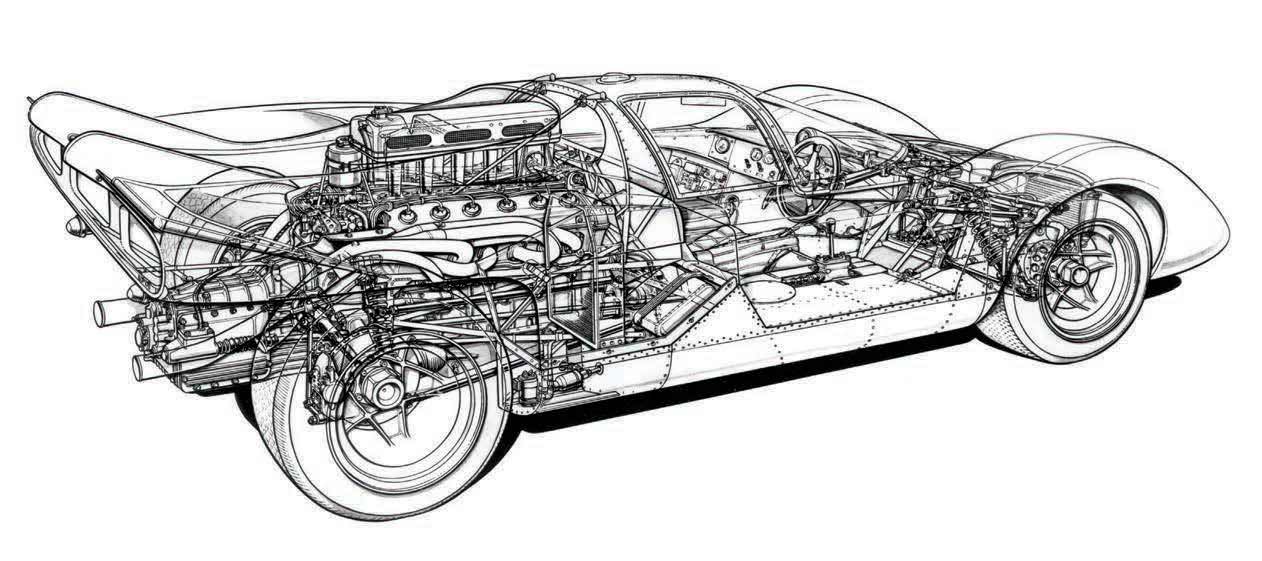
“You are really aware of the car’s short wheelbase, especially through some of the quicker sweeps at Donington. It feels as though it’s up on its toes a little bit. You have to be very careful with some of the inputs, whether it’s lifting off the throttle, getting on the brakes or controlling the car’s pitch through those fast corners. But yeah, it’s just a beautiful little thing to drive.
“The 512 has such a small wheel compared with the Lola or the 917, it’s tiny – and the steering feels quite heavy, especially as you carry your braking into the corner and feel the front loading up.
“The steering might be heavy, but the gearbox was lovely once we’d done a little fine-tuning. Just getting on the throttle, pushing that pedal, the noise getting louder and louder… It’s a Ferrari 512S, what’s not to love? It’s kind of odd, with the mirror up above the centre of the screen. There are no side mirrors, so you have to look up to see what’s going on. It’s a bit disconcerting turning in and not being able to look in your mirrors to see whether or not there’s anybody steaming down your inside.
“Being here at Donington and playing for 10 laps or so is a lot of fun, when you’re at perhaps six tenths or something, but to think about driving it on the limit at Le Mans, the Nürburgring – or even the Targa Florio, God forbid – this thing would have been a beast! One thing all three have in common is that they’ll let you know when you’ve exceeded the limit, when you’ve taken some liberties. You can really feel that big lump behind trying to overtake the car, so you’ve got to be quite careful with it, but when it slides it is quite controllable, especially under power. The guys that drove these in the wet, at night, during a 12- or 24-hour race… They were proper. The courage required to keep this thing nailed through the Mulsanne Kink, or over some of those jumps at the Nürburgring, would have been something quite special. “You’re sitting here, looking at the little rev counter and the bubble it sits in, the view around the screen, the open cockpit top… and then you look at the tanks around the front and realise that in period the drivers were surrounded by fuel. Crikey…
“But overall it’s stunning. These three were all bucket-list cars and the 512S didn’t disappoint.”
The Ferrari 512S is almost as much engine as it is chassis, with a huge 5.0-litre V12 sitting right behind the driver. Franchitti noted that it was deafeningly loud…
DARIO’S VERDICT ON THE PORSCHE 917K
“I guess this is the daddy of them all, the car. It has such a fearsome reputation, but then you get in and… look how reclined I am! Then you realise the back of the front wheels are right here [points at thighs] and my legs are a good bit that way, so they – well, my feet – are actually the first bit of crash structure, which is a little disconcerting. “Then you look up and see this supposed roll cage – my bicycle has bigger tubes! And it’s a 250mph car – it’s terrifying. Then you start it with a key – no buttons, no histrionics, no fuel pumps to switch on – and the start key is drilled to save weight, which seems typically Porsche.

“The engine pulls like a locomotive, all the way up from zero revs, although there is a red line at 7000rpm. It pulls continuously and is just so tractable. And then you have this lovely gearbox, with the wooden gearknob – again to save weight. The car is dominated by its driving position – you are so reclined and really guide it with your wrists – you feel the movement when you accelerate and the car goes up like a speedboat, then you brake and it drops down and dives. You can control the pitch and how you enter the corner by how hard you brake, how late you brake and how long you stay on the brakes.
“You look in the mirror and remember the moment from Le Mans when Steve McQueen did that and you realise again what a special car this is. To be allowed to drive it today… it’s pretty cool.
“The brake travel was quite long, perhaps the system needed bleeding a little, and the same is true of the throttle. I think that was effectively a form of traction control in 1971 – it gave you more time to think about it! “Steering weight wasn’t too bad – I think the diameter is about twice that of the 512S, so I guess Porsche was thinking more about driver comfort. It makes it easier to feed in those inputs and to get some feeling from the front tyres. It brakes very well – long travel, but the 917 stops on its nose. And it’s so settled in the fast corners, certainly compared with the shorter-wheelbase 512S. This car really loves those fast sweeps and you can see it being at home at Le Mans, though it’s probably a challenge through somewhere like the Mulsanne Corner. Down at Redgate you really have to wait for the car, with that big lump of an engine behind. Driving this thing in a 24-hour race? I’d have had a wee spin at it, although I’m not sure I’d have been brave enough to keep my foot down in some of the conditions. There’s no aero on it really, no drag, so it just keeps pulling and I think that’s why it was such a mighty weapon on the Mulsanne.
“I was fortunate enough to drive a 917 a few years ago – and getting back into one today is just as intimidating, just as much fun and just as much of a privilege.”
The Porsche 917K may be one of the most famous sports cars in history, but it certainly tested the bravery of its drivers in period, with its crash structures starting with their feet and knees.
DARIO’S VERDICT ON THE LOLA T70
“The Lola feels a little different in that it’s an active racing car, while the 917 and 512S are borderline museum pieces. This is a bit more ‘on the button’, maybe a bit more sorted. In chassis terms it’s fantastic, you can feel how it rolls together. It has a lot more grip than I’d imagined and heavy steering – with a big wheel and lots of weight fed through it. If you were being picky the 5-litre Chevy V8 engine lets it down a bit, but I guess in its day it was a cheap way to find loads of horsepower. And you have to remember that the original T70 predates the 917 and the 512S by a few years…
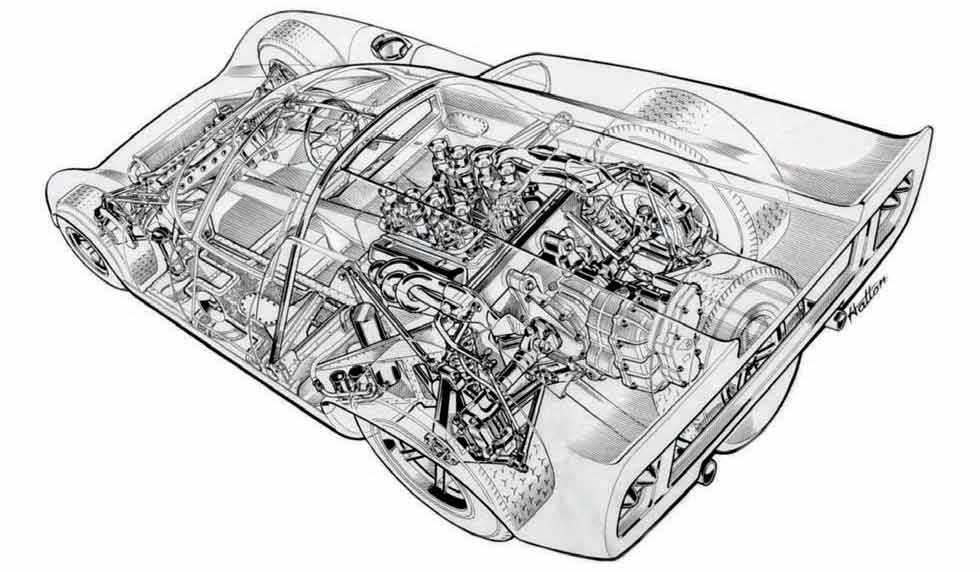
“You don’t really need a gearlever because it has so much torque. It pulls from nothing like American muscle cars do. It just grunts along and it has probably been the surprise of the day. It’s so much fun to drive. And because it races regularly, I felt a bit more willing to push it. “From the outside the driving environments might look similar, but they are actually quite different. The Lola has more room, the steering wheel is higher and closer to you – a more modern type of arrangement and certainly less compromised than the 917 or the 512S. I would be a lot happier doing 24 hours in this as far as the cockpit goes because it’s the most comfortable of the three. Perhaps it doesn’t have the peak performance of the Porsche or the Ferrari, but what it has to offer is more accessibility.
“It’s a great thought to have, isn’t it? Racing a T70 in South Africa, Angola or maybe some of the crazier places in South America that these things showed up. With that American V8 behind you and a stock of spare parts from Lola, you could have done that and I reckon it would be a lot of fun, although a wee bit toasty in the hotter climates. “I think the T70 is probably underrated – I certainly underrated it – but it surprised me in a very positive way. “The one thing that maybe lets it down, is the gearbox, which is a bit stiff. You have to be very, very careful with it, but it’s probably a necessity as it has to handle all that torque. Once you acclimatise, it’s business as usual.
“One of the reasons the late ’60s/early ’70s era of sports car racing caught the imagination is because there were essentially no rules. Look at a 917 today and you think, ‘Wow, a 250mph sports car, that’s special’ – but back in 1969 it must have been perceived as a spaceship. That’s why people loved sports car racing – and the T70 made it accessible to an awful lot of drivers who didn’t have access to a Porsche or a Ferrari. In some ways it was a grid-filler, but that’s doing it a terrible injustice.
“If you could take the handling, dependability and accessibility of the T70 and combine it with the 917’s engine and fast-corner balance and the slow-corner agility of the 512S, you’d have a pretty good car.”
The Lola T70 Mk3B was the plucky underdog of our test, but suitably impressed Franchitti with its creature comforts and sheer fun factor.
Heroes of history
All three cars came to define their era and attracted some of the greatest drivers ever to grace the sport.
Porsche 917
One of history’s most celebrated racing cars, from any domain
Engine: 5.0-litre flat-12. Introduced: 1969
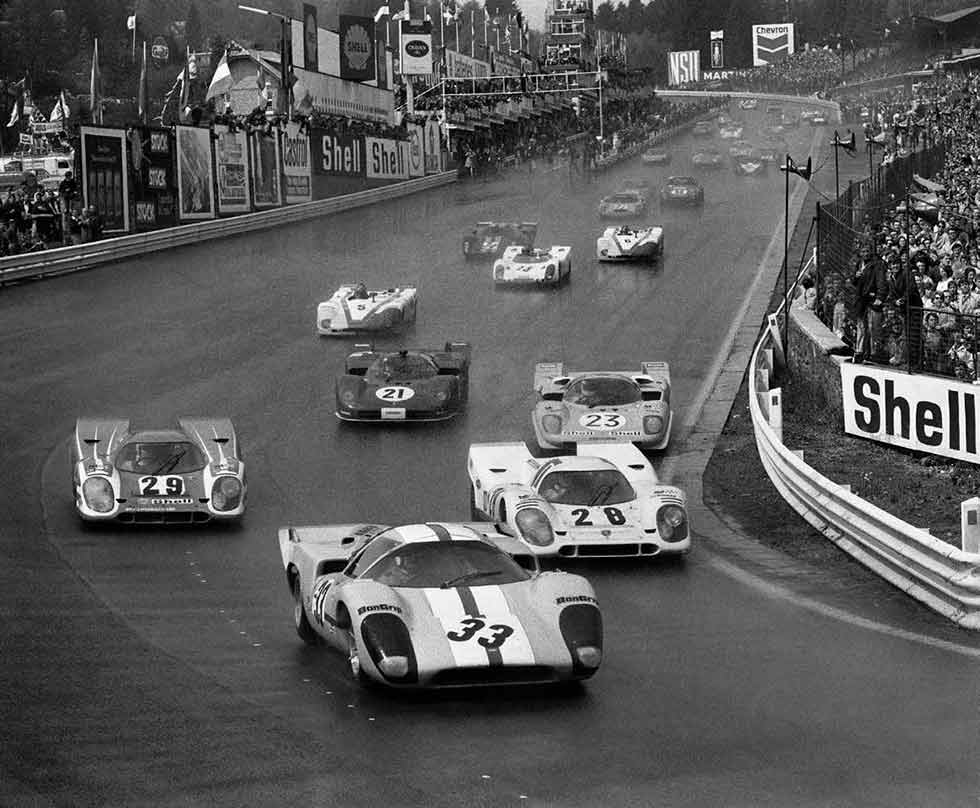
NOTABLE VICTORIES
1969 Zeltweg 1000Kms Jo Siffert/Kurt Ahrens
1969 Kyalami 9 Hours Richard Attwood/David Piper
1970 Daytona 24 Hours Pedro Rodríguez/Brian Redman/
Leo Kinnunen
1970 Brands Hatch 1000Kms Pedro Rodríguez/Leo Kinnunen
1970 Monza 1000Kms Pedro Rodríguez/Leo Kinnunen
1970 Spa 1000Kms Jo Siffert/Brian Redman
1970 Le Mans 24 Hours Richard Attwood/Hans Herrmann
1970 Watkins Glen 6 Hours Pedro Rodríguez/Leo Kinnunen
1970 Dunes Trophy, Zandvoort Gijs van Lennep
1970 Zeltweg 1000Kms Jo Siffert/Brian Redman
1971 Buenos Aires 1000Kms Jo Siffert/Derek Bell
1971 Daytona 24 Hours Pedro Rodríguez/Jackie Oliver
1971 Sebring 12 Hours Vic Elford/Gérard Larrousse
1971 Monza 1000Kms Pedro Rodríguez/Jackie Oliver
1971 Spa 1000Kms Pedro Rodríguez/Jackie Oliver
1971 Le Mans 24 Hours Helmut Marko/Gijs van Lennep
1971 Zeltweg 1000Kms Pedro Rodríguez/Richard Attwood
1971 Paris 1000Kms, Montlhéry Gijs van Lennep/Derek Bell
1972 Copa Brasil, Interlagos Wilson Fittipaldi
Ferrari 512S
The Porsche 917’s elegant rival, forerunner to the 512M
Engine: 5.0-litre V12. Introduced: 1970
NOTABLE VICTORIES
1970 Sebring 12 Hours Mario Andretti/Nino Vaccarella/Ignazio Giunti
1970 Zolder 500Kms Georg Loos/Helmut Kelleners
1970 Fuji 200Kms Giampiero Moretti
Lola T70 Mk3B
Eric Broadley masterpiece, almost everyone’s favourite Lola
Engine: 5.0-litre Chevrolet V8. Introduced: 1969 (Mk1 in 1965)
NOTABLE VICTORIES
1969 Daytona 24 Hours Mark Donohue/Chuck Parsons
1969 Guards Trophy, Snetterton Paul Hawkins
1969 Embassy Trophy, Thruxton Brian Redman
1969 Tourist Trophy, Oulton Park Trevor Taylor
1969 GP de Paris, Montlhéry Jo Bonnier
1969 Norisring 200 Brian Redman
1969 Kodak Trophy, Thruxton Denny Hulme
1969 Swedish GP, Karlskoga Brian Redman
1969 Cape Town 3 Hours, Killarney Frank Gardner/Mike de Udy
1970 GP de Paris, Montlhéry Richard Attwood
1970 Vila Real 500Kms Teddy Pilette/Gustave Gosselin
1970 Copa Brasil, Interlagos Wilson Fittipaldi
1971 GP de Paris, Montlhéry Bob Wollek
COMPLETING THE TRIFECTA
We track down one of the very few drivers who raced the Lola T70, Porsche 917 and Ferrari 512 in their heyday. Writer Jack Phillips.
Four years separated the Lola T70, the Porsche 917 and the Ferrari 512 in an era when the same motley band of drivers would traipse around the world racing what would become the sport’s most memorable prototypes. Yet finding a driver who raced all three is a tall order. Many drove two out of the three, but very few completed the set. We can name two, and we’re talking to one. Can he guess his peer?
“Brian [Redman]?” He offers. “Oh no… he drove the 312, didn’t he?”
Correct. The educated man is ‘Hobbo’. David Hobbs is a member of an exclusive club, for he and Jackie Oliver are seemingly the only two men who drove each of these cars in period.
Hobbs’ role in the piece stretches back to the T70’s inception, stepping up from his little giant-killing Lotus Elite to the new and ground-breaking T70 in 1965. He helped to develop the Lola and raced all three variants, the Mk1, 2 and 3, briefly racing the 917 before spending a year in the best of all the 512s, the 512M of Penske and Mark Donohue.
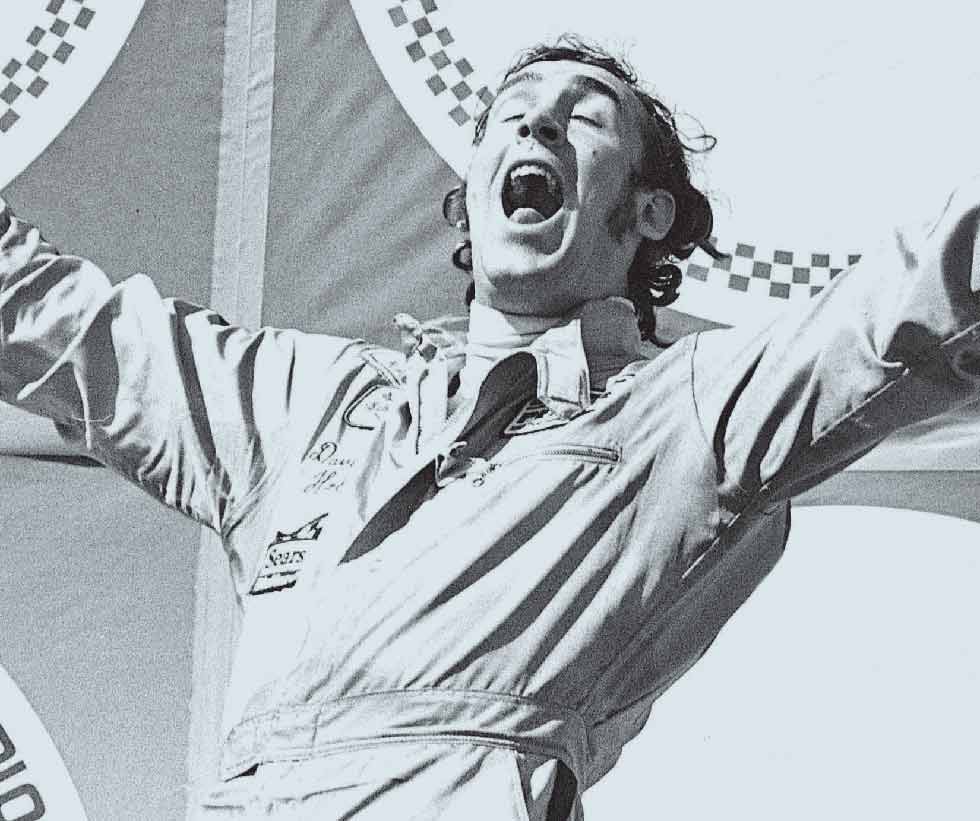
“To compare the three,” he says, “is a bit of a task, quite honestly. The 917 of course had that amazing flat-12 engine, which was pretty awesome. The Ferrari had a beautiful V12, which gave a lot of horsepower, was slippery and responded to changes. But the Lola was the biggest step forward from what had been available before – it was a big advancement for its time, huge.”
“Next to our Penske 512, the NART car looked like a bucket of bones, with oil leaking from the gearbox”
By the time the big two had appeared, the T70 was already showing its age and had fallen from the top tier. When Porsche and Ferrari fought for 1970 and 1971 world championship honours, the Lola was all but nestled away in the history books, cherishing a 1-2 at Daytona in 1969 (thanks to a man who drove two and a half of the three, Mark Donohue).
In the four years from its launch the T70 had gained a roof, longer tail and breadvan stylings, but the 5-litre powerhouses left it breathless. Yet it still made its mark.
“The T70, was way ahead of its time,” Hobbs says. “It was the first monocoque sports car and had nice aero from a slippery point of view, but this was a long way before aero was properly understood. It had big front-end lift, but we didn’t know that at the time and all cars did, really. It was a very, very impressive car.
“I went to a lot of the testing, when John Surtees was driving the prototype at Silverstone because the team I was going to drive for, Harold Young in Long Melford, was going to be one of the first privateers to have one. The lap times were staggering.
The Formula 1 record was about 125mph or thereabouts. John cranked out a lap at 133 or 134mph. It was a huge step up.”
The T70 made its presence similarly felt in competition. In practice for the 1965 Tourist Trophy – moved from Goodwood to Oulton Park and split into two one-hour races – Surtees went almost three seconds quicker than the F1 lap record. Hobbs should have won the race but was awarded second following confusion with the aggregate scoring, despite having only the smaller 289 Ford block compared to the works Lola.
“We should have had a 327 Chevy, the small block, which was significantly more powerful. The Chevy had a good bit of punch, but the 917 and 512 did too. But, as you know, racing cars can develop a lot in five to six years. “The T70 was the best car I’d driven, but the gearbox in the Lola was the LT500, which was an absolutely foul gearbox to use. It was bloody awful – to do a decent shift was almost impossible.”
The Porsche’s ’box, a few years later, was little better and cost him a longer spell in the car and ended a long association with Gulf.
“We all assumed that I would carry on in ’70 when they changed to the 917, but the Porsche guys didn’t like me. Mr [Ferdinand] Piëch didn’t. He had the perfect opportunity to turf me out at the test at Daytona when I mis-selected a gear going onto the banking. It blew the engine up, but of course that was a trait of the 917 because it was something of a flexible flier.
“The gearlever back to the gearbox was a long way, and of course the classic one was Jo Siffert at Le Mans in 1971. He and Brian were leading by a few laps and Jo missed a gear right in front of the pits, Mr Piëch and everyone else.”
If the Lola was the best car he had driven, the Porsche took the mantle of being the fastest. And, having raced the car later in 1970, the main problems had been ironed out. Its deadly attributes had been largely tamed – although not fully.
“It had nothing like the stability of the T70, but it had a lot of horsepower and a lot of torque. There are lurid stories that it would wander side-to-side down the Mulsanne Straight, but I don’t remember it having too many vices. At Le Mans, Gulf ran three cars and John Wyer asked me and Mike [Hailwood] back. We had the 4.5-litre, as did Richard Attwood, but the other factory cars had the 5-litre, so were quite a bit quicker than us. But we soon moved up; if I hadn’t liked the car I wouldn’t have done that.
“At the time I wasn’t really thinking of it in relation to the T70, but it was more aerodynamic because it had more downforce. Towards the end of the T70 we put a bigger spoiler on it, but the 917 was certainly a step up.”
The Penske-developed Ferrari 512M would soon take the title of fastest and best, if not the most comfortable. “Mark [Donohue] was lead driver and about three inches shorter than me, so my head touched the roof the whole time. We didn’t have seat inserts or anything like that, so the seat was made for Mark and that was it.”
His 512 stands apart from all others, too, in that Donohue carried across the locked differential from his Trans-Am. “Quite why I don’t know,” admits Hobbs. “It gave a good bit of understeer, especially in low-speed corners, but the car was very, very fast. It was very nice to drive and responded well to any slight chassis or aero change. I know at Daytona before the days of the chicane on the back straight we would arrive at NASCAR 3 doing something like 218mph.”
The locked diff made it as much a Penske as it was a Ferrari, and makes it hard to compare the Penske car to a NART one. “Generally speaking, a 512 had no chance against a decent 917. Our car was quicker at every race we went to, so that shows it was our car. Not just a 512. It required a different type of driving – you had to throw it into slower corners to make sure the thing rotated, otherwise it would just push straight on. You got on the power early and used a bit of a powerslide technique to make it work.”
Visually, the standard NART and Penske were diametrically opposed, too, according to Hobbs. “Our 512M was derided when it arrived at Daytona because it was polished to a high degree, even the wheels. Next to ours the NART car looked like a bucket of bones – bits of weld, knackered bodywork, oil leaking out of the gearbox and engine. That was typical Ferrari for the day. Ours was different.” That was down to Penske’s meticulous attention to detail, which played a massive part in the team’s success. Yet that wasn’t forthcoming for the Ferrari, despite the driving talents of Hobbs and Donohue, and the refining abilities of the latter.
Pole at Daytona was converted into a dominant lead, only for misfortune to intervene. “Vic Elford in a 917 had a tyre blow on the banking and spun down, causing the most horrendous cloud of smoke and dust. Mark, like any normal person, slowed up, and some twerp in a 911, that we’d already lapped about 10 times, ran into him. We put about a thousand yards of tape on the car and still ended up third.”
Sebring went a similar way. Donohue and nemesis Pedro Rodriguez clashed, seemingly unnecessarily. “What I’ve heard since is that it was Mark’s fault,” says Hobbs. “He came in and said Pedro had crashed into him, then swerved and crashed into him again. I just don’t see Pedro doing that. On the other hand, I don’t see Mark doing that either.
“I have spoken to people who saw the incident, because it was way out at the back of Sebring; it was a case of diving inside a tricky corner, Mark stuck his neck out a bit and they touched, then touched again. Why he had this thing against Rodríguez I have no idea, but it cost us the race. We would have won.”
At Le Mans, handicapped by being a short tail, a blown engine struck the team down. “That was the race that was run at record pace; [Gijs] van Lennep and [Helmut] Marko won at the highest average speed but they had a long stop. I think we might have won that race, but they changed the engine before the race for a brand-new Ferrari. Roger was adamant but Mark and John ‘Woody’ Woodard [chief mechanic] were dead against it. But Roger won out, we changed it and it bloody blew up. I don’t think they could ever get their head around the fact that the Traco engine we had been running was so reliable. “Then a steering pole broke at Watkins Glen when we were on the pole and leading by miles! That 512 was the fastest; we just had sh**ty luck with it.”
Put simply, from a man who knew them all when they were young, “They were all good cars in their day; the Ferrari was probably the best, just because it was newest, but the T70 was the biggest technical advancement.”






